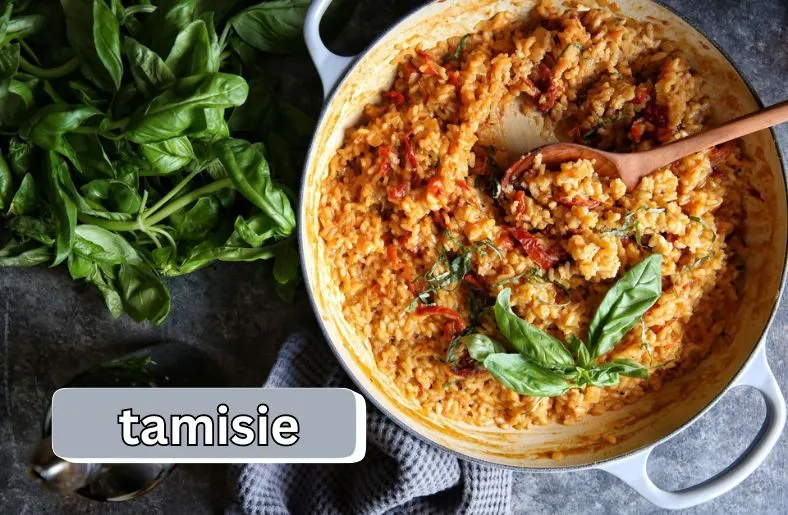Introduction
Welcome to the enchanting world of Tamisie, where flavors intertwine with tradition to create a culinary journey like no other. Embark with us as we uncover the magic behind this ancient delicacy, from its humble beginnings to its global acclaim. With each bite, discover a tale of cultural richness and gastronomic delight, inviting you to explore a treasure trove of taste sensations.
Tamisie, a term steeped in history and steeped in flavor, captures the essence of culinary heritage in every bite. From its Southeast Asian origins to its widespread popularity worldwide, Tamisie has transcended borders to become a symbol of culinary excellence. Join us as we delve into the depths of its origins, exploring the intricate web of cultural influences that have shaped its evolution.
Throughout this journey, we’ll unravel the secrets of Tamisie’s allure, from its intricate preparation methods to its diverse flavor profiles. With each revelation, you’ll gain a deeper appreciation for this beloved ingredient and its place in the culinary world. So, grab a seat at the table and prepare to embark on a culinary adventure unlike any other – welcome to Tamisie Tales.
The Origins of Tamisie
Let’s journey back in time to uncover the ancient origins of Tamisie, a culinary gem that has captured hearts and palates for centuries. Originating in Southeast Asia, Tamisie has a rich history steeped in tradition and cultural significance. Its roots can be traced back to ancient civilizations, where it was revered for its unique flavor and medicinal properties.
Throughout the ages, Tamisie evolved, adapting to the diverse landscapes and culinary practices of different cultures. From its humble beginnings as a regional delicacy to its widespread popularity on the global stage, Tamisie has undergone a remarkable transformation.
In Southeast Asia, Tamisie holds a special place in the hearts of the local communities, where it is celebrated as a symbol of cultural identity and culinary heritage. Passed down through generations, the art of making Tamisie is a cherished tradition that continues to thrive to this day.
As Tamisie gained popularity beyond its native shores, it became synonymous with exotic flavors and innovative cuisine. Today, Tamisie can be found in kitchens around the world, where chefs and home cooks alike experiment with its versatile flavors and textures.
Despite its global appeal, Tamisie remains deeply rooted in its Southeast Asian heritage, with each bite telling a story of tradition and authenticity. So, the next time you savor a dish made with Tamisie, remember the centuries of history and culture that have shaped this culinary masterpiece.
The Cultural Significance of Tamisie
Tamisie holds a profound cultural significance in the regions where it is celebrated. From Southeast Asia to the rest of the world, Tamisie is more than just a dish; it’s a symbol of community and tradition. In many cultures, the preparation and sharing of Tamisie are steeped in ritual and symbolism. It often serves as a centerpiece for gatherings and celebrations, bringing people together in a shared appreciation of food and culture.
The cultural significance of Tamisie extends beyond its role as a culinary delight. It embodies the values and traditions of the communities that embrace it, reflecting themes of hospitality, generosity, and heritage. Through the centuries, Tamisie has been woven into the fabric of daily life, becoming an integral part of cultural identity.
In addition to its role in traditional festivities, Tamisie also holds symbolic meaning in art, literature, and religion. Its rich flavors and textures have inspired poets, artists, and storytellers, who use it as a metaphor for life’s joys and struggles. In religious ceremonies, Tamisie often plays a symbolic role, representing themes of abundance, prosperity, and spiritual nourishment.
Across generations, Tamisie has been passed down as a treasured family recipe, with each iteration preserving a piece of cultural history. As communities evolve and change, it remains a constant reminder of tradition and heritage. Whether enjoyed at a family dinner or a festive gathering, it continues to bring people together, fostering a sense of connection and belonging.
Exploring the Flavors of Tamisie
Let’s embark on a journey to discover the rich and diverse flavors of Tamisie. From sweet to savory, Tamisie tantalizes the taste buds with its unique blend of ingredients and spices.
Starting with the sweet varieties, Tamisie delights with its rich and indulgent taste. Sweet Tamisie often features ingredients like palm sugar, coconut milk, and aromatic spices such as cinnamon and cardamom. These ingredients come together to create a symphony of flavors that dance on the palate.
On the savory side, it offers a savory delight that is equally satisfying. Savory Tamisie typically includes ingredients like rice flour, vegetables, and protein sources such as chicken or fish. These ingredients are seasoned with herbs and spices to create a savory masterpiece that is sure to please.
No matter the flavor profile, it is known for its versatility and adaptability. It can be enjoyed as a main course, side dish, or even a dessert, depending on the ingredients and preparation method.
In addition to its delicious taste, it also offers a range of health benefits. Rich in nutrients and antioxidants, Tamisie is believed to support digestion, boost immunity, and promote overall well-being.
Traditional Tamisie Recipes
Traditional Tamisie recipes are cherished for their authenticity and rich cultural heritage. Passed down through generations, these recipes offer a glimpse into the culinary traditions of various cultures. From Southeast Asia to the Mediterranean, each region has its own unique take on it, with subtle variations in ingredients and preparation methods.
In Indonesia, traditional Tamisie recipes often feature a combination of rice flour, coconut milk, and palm sugar. These simple yet flavorful ingredients are mixed together to create a batter, which is then steamed until set. The result is a dense, slightly sweet cake known as “kue putu,” a popular snack enjoyed across the archipelago.
Similarly, in the Philippines, it takes the form of “kutsinta,” a steamed rice cake made with rice flour, brown sugar, and lye water. The batter is poured into small molds and steamed until set, resulting in a chewy and slightly sticky texture. Kutsinta is often served with freshly grated coconut or a sprinkle of toasted sesame seeds for added flavor.
In Malaysia, traditional Tamisie recipes include “kuih talam,” a layered cake made with rice flour, coconut milk, and pandan leaves. The batter is steamed in layers, with a green pandan layer on the bottom and a white coconut layer on top. Once set, the cake is sliced into squares and served as a sweet snack or dessert.
Across all these variations, traditional it recipes share a common thread of simplicity and elegance. They highlight the natural flavors of the ingredients while paying homage to cultural traditions and heritage. Whether enjoyed as a snack or dessert, these recipes continue to delight taste buds and bring people together in celebration of food and culture.
Health Benefits of Tamisie
Tamisie offers a range of health benefits beyond its delicious taste. Rich in essential nutrients and antioxidants, it supports overall well-being and vitality. Incorporating Tamisie into your diet can promote better digestion and support a healthy immune system.
The combination of ingredients in Tamisie provides a balanced source of vitamins, minerals, and fiber. This helps regulate blood sugar levels and promote a feeling of fullness, making it a satisfying and nutritious choice. Additionally, it contains antioxidants that help protect cells from damage and reduce inflammation in the body.
One of the key health benefits of Tamisie is its role in supporting digestive health. The fiber content helps promote regular bowel movements and prevent constipation. It also supports the growth of healthy gut bacteria, which is essential for proper digestion and nutrient absorption.
Furthermore, it can help boost immune function, thanks to its rich vitamin and mineral content. These nutrients play a vital role in supporting the body’s natural defense mechanisms, helping to ward off infections and illness. By incorporating it into your diet, you can give your immune system the support it needs to stay strong and healthy.
Overall, Tamisie is a nutritious and delicious addition to any diet. Its combination of flavors and health benefits make it a versatile ingredient that can be enjoyed in a variety of dishes. Whether you’re looking to support your digestive health, boost your immune system, or simply enjoy a tasty meal, it has you covered.
Conclusion
In conclusion, Tamisie is not just a culinary delight but a symbol of cultural richness and tradition that transcends borders. From its ancient origins in Southeast Asia to its global acclaim, it has woven itself into the fabric of diverse cultures, serving as a centerpiece for gatherings and celebrations worldwide. Its versatility, from sweet to savory, offers a treasure trove of taste sensations that delight the palate and nourish the body. With each bite, Tamisie tells a story of heritage and authenticity, reminding us of the centuries of history and culture that have shaped this beloved ingredient. Embrace the magic of it and embark on a culinary journey unlike any other.





